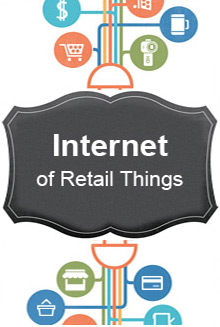The Internet of Things (IoT) has been at work, actively changing the landscape in both worlds—industrial and consumer. Organizations that started testing the waters with working prototypes during the last few years have realized that leveraging IoT in initiatives will bring in digital transformation, delivering increased business returns. Due to this realization, small-scale proofs of concept (PoCs) are now being scaled up to large-scale engagements.
Data from critical assets is being sent to a centralized location—mostly in the Cloud—in real time, and this data is analyzed to derive valuable, actionable insights. Enterprises are increasingly treading on this path, and as per a Mordor Intelligence report, the global IoT market that was valued at USD 193.60 billion in 2019 is expected to reach USD 657.31 billion by 2025, at a CAGR of 21%. That’s a big leap!
What are the top IoT trends that organizations and consumers must be prepared for in 2020? From Edge Computing to Digital Twin to IoT Security, this blog post gives an overview of the leading trends that will shape the near future.
Edge computing for better security, greater speed, and cost benefits
As the Internet of Things adds up gadgets or devices behind the firewall of the network, organizations are apprehensive about the security of their data. Embedding security between the network connection and software applications that connect to the IoT devices needs to be well-strategized. Enterprises do not want to send all critical data to the Cloud, and these security and privacy concerns are leading them to perform analysis of IoT data on the Edge itself.
Consider a factory or an industrial mining setup or any high-risk work environment. While such places apply restrictions on sending data off-premises, they also demand low latency and high network reliability with 99.9% uptime. Here, cloud computing is a “no”, and physical cabling and proprietary wired protocols will not provide the ultimate solution. These situations are where edge computing will play a greater role, helping unify disintegrated technology environments.
Many organizations also believe that Edge computing offers better speed at a lower cost in comparison with Cloud computing. All these arguments together are driving them toward Edge Computing—with Edge Artificial Intelligence (AI), Edge analytics and IoT Edge architecture at the forefront.
Digital twin for asset performance management
Digital twins, the digital replicas of their real-world counterparts, bring down complexity in the IoT ecosystem. In the current fast-paced world where time is everything, consumers and organizations cannot afford to waste time due to machine or asset failure. In such a scenario, the digital twin allows product manufacturers and distributors to carry out preventive maintenance, servicing, etc. at the right moment. They are able to remotely—by interacting with the digital replica rather than with the physical product—monitor the condition of critical assets in manufacturing plants, retail stores, and other locations, ahead of time. This helps them to predict failure even before the asset fails in the real world, giving enough time to troubleshoot issues. Rolls Royce leverages the power of IoT in their engines built for commercial aircrafts, facilitating on-time maintenance operations.
Predictive maintenance will drive IoT adoption along with remote operations and asset optimization use cases. The digital twin will also facilitate better product quality and efficiency by allowing manufacturers to make necessary modifications to future product rollouts based on real-world information from items already in the market. The application of digital twin technology is not limited to manufacturers alone. It could help doctors predict impending critical illnesses such as cancer—through sensors in one’s house, vehicle and smartwatch—and enable early diagnosis.
Did you know, the predecessor of the digital twin was used by NASA to rescue the Apollo 13 mission when it ran into trouble and save the astronauts stranded in an orbit around the moon? To fix a broken component, a solution was modeled on the ground using exactly the same physical components that were available to astronauts in the distressed capsule. The broken component’s twin was tested before effectively applying the solution to the actual capsule in space. Though it wasn’t a digital solution back then, today, digital twins enable NASA to better understand and control operations of machines moving across the solar system.
Augmented reality for a more efficient workforce
Randstad’s Workplace 2025: The Post-Digital Frontier study highlights that ~40% of workers leave an organization due to lack of access to state-of-the-art digital tools. Go2HR highlights a finding from another study: 40% of employees who receive poor job training resign within the first year. This points to a direct link between employee skills, training and efficiency. Practicing learnings virtually before actual customer interactions can not only save technicians a lot of anxiety and time but also helps in offering a better customer experience.
The application of augmented reality (AR) is progressing across industries and will play a key role in mitigating the implications of an aging workforce. AR smart glasses can guide field service agents in accomplishing tasks, visually guiding them with step-by-step instructions through overlapping computer-generated video and text information on physical objects. This will make troubleshooting issues easy and will reduce the need for a skilled workforce to perform jobs.
IoT security to prevent hacking and data stealing
Around three years ago, the Mirai botnet searched for open Telnet ports, took control of insecure IoT devices, and attempted to log in default passwords, forming a whole botnet army. An extremely powerful distributed denial of service (DDoS) attack resulted in loss of access to the Internet across the U.S. east coast. To make the situation worse, the source code for the attack was published on hack forums as open-source, making it easier for hackers to adopt similar techniques in other malware projects.
Yes, IoT networks are vulnerable to hacking and other forms of cyberattacks due to their centralized IoT architecture. Billions of sensors, gateways, IoT platforms, etc., are connected and more devices are getting added by the day. IHS Markit expects 125 billion devices to be connected via the IoT by 2030. Then, there’s integration with other enterprise data, and all of this means that at every point, IoT is a sought-after target for cyberattacks. There is a high possibility of data hacking and stealing, making IoT security extremely important. Cybercriminals could target IoT devices for ransom from device manufacturers. Hence, before implementing IoT, people and organizations will be cautious about how the end-to-end security of their data and privacy is taken care of. Due to this, manufacturers are increasingly recognizing the benefits of having strong security embedded in all connected devices.
Interestingly, there’s also Blockchain, offering new hope for IoT security. It is public, decentralized and secure with no single authority allowed to approve transactions, eliminating the risk of a single point of failure. Furthermore, it is not possible for anyone in the network to tamper previous records. Blockchain will play a role in complex, decentralized, multi-party relationships most likely required to deliver as-a-service machines, consistently, and at scale.
IoT for customer delight
Mobile banking has already transformed the way customers execute financial transactions. But to ensure the traditional branch approach continues to deliver value, banks and financial organizations could take advantage of IoT and invest in smart branches. These will enable them to bring down staff strength as well as maintenance costs at their branches. Bank branches could increasingly use connected technology and chatbots for customer service (without human employees), and in case of new and unpredictable queries, video conference tools would allow users to connect with human consultants for personalized assistance.
IoT as a technology is bringing in efficiency in operations, and enhanced customer experience has become the top IoT use case in the Financial Services and Banking sector. IoT—via real-time data from biometric sensors or customer devices such as mobile phones—can also enable banks to detect and offer customized service to the end customer when he/she walks into the traditional branch setup. MarketsandMarkets predicts the IoT market size to reach over USD 2 billion by 2023 in the banking and financial services sector.
Increased IoT adoption across industry segments
The three leading industry segments with respect to IoT implementation are Industrial, Energy & Utilities, and Retail. While IoT is already leveraged in quite a few functions, the scale of IoT development will gradually rise over the course of the year. A Forrester study highlights that ~55% of IoT implementation has already been completed in the Utilities and Telecommunications industry, while 53% IoT development has taken place in the High-tech Products and Industrial Products segment, and 51% in the Chemical, Oil and Gas segment.
Manufacturing factories are progressively connecting their machines and assets to get real-time data—to predict failure and troubleshoot issues ahead of time, preventing failure and the need to shut down the plant or specific assets. Logistics and transportation companies are also looking at how they can visualize real-time data from their commercial, passenger and consumer vehicles to optimize supply chain, trucking and logistics operations.
Energy management and facility management are two other areas that are seeing increasing IoT adoption. Public utilities companies can leverage IoT to deliver real-time data on energy (electricity, water, etc.) consumption and associated costs on consumers’ handheld devices, enabling them to save energy by reducing consumption wherever possible.
Facility management too has great scope for enhancing customer experience and bringing down operational costs through IoT. Detecting issues in appliances, reaching out to the company’s contact center to register a complaint, waiting for the service technician to come over and solve the issue—the whole scenario could be automated with IoT. When sensors in the consumer device or appliance or machine automatically send data to the manufacturer’s remote platform, it is possible for the seller to monitor the asset remotely and automatically schedule the right technician’s visit ahead of time—before an issue or failure occurs, to address the problem, resulting in customer delight.
Top domain-agnostic use cases and leading IoT software vendors
A majority of IoT use cases that will be targeted in the year 2020 will include asset performance monitoring, predictive or condition monitoring, supply chain management, and inventory & warehouse management under Industrial Manufacturing (process and discrete). Under Retail, IoT will be mainly leveraged for supply chain management, inventory & warehouse management, and fleet management. Utilities will witness increased IoT adoption for transforming field services and fleet management.
Leading industrial IoT software vendors with readily available platforms to facilitate implementation include Microsoft, Amazon Web Services (AWS), Google, PTC, C3.ai, and Siemens. Analytics, pre-packaged applications, and integration will be the key differentiators that will determine the success of IoT platforms and services.
What’s more!
Smart displays and multi-screens are already popular today, and 2020 will see this trend rising further. Forrester highlights that over 40% of IoT devices will transmit data to gateways or other nearby devices using low-power wireless personal-area networking technologies (LoWPAN). IoT will also transform business models and we’ll probably see a change from product-based billing to consumption-based billing. This would mean that products would be handed over and installed at zero cost, charging consumers periodically based on usage of service. Major vendors will pivot from a connected-products to a connected-services ecosystem.
IoT already has an impact on almost every day-to-day task and it would be unwise for organizations to ignore the impact and not take action! As IoT soars in popularity, enterprises that leverage it to enhance operational efficiency and personalize customer experience will win the competitive edge.

is Chief Technology Officer (CTO) for Digital Business Services and also heads the IoT CoE at Happiest Minds. He has over 24 years of extensive technical and management experience. His expertise and interest lies in building niche global technology products across multiple areas like Multimedia and Communication technologies, Broadband modem, Set-top Box, Triple play Gateway, IoT, Complex Hardware and Portable components across multiple platforms, etc.




